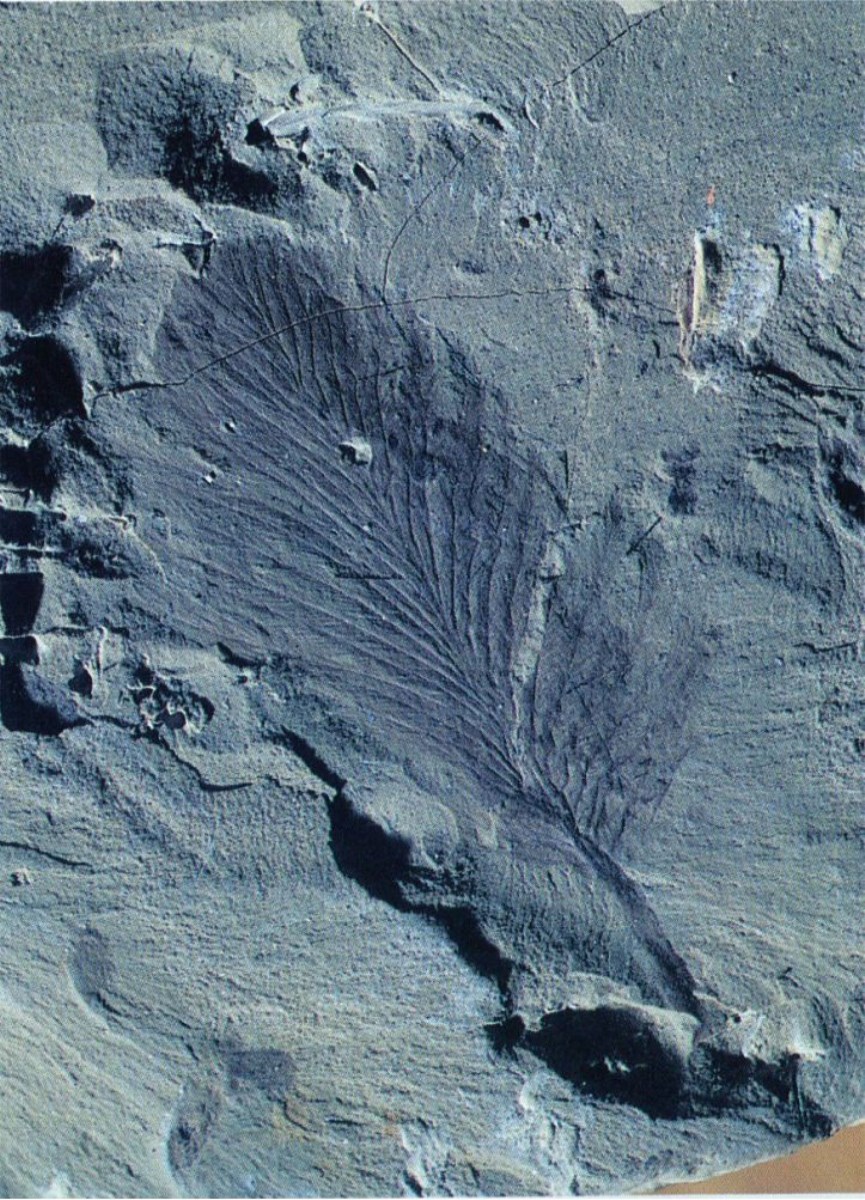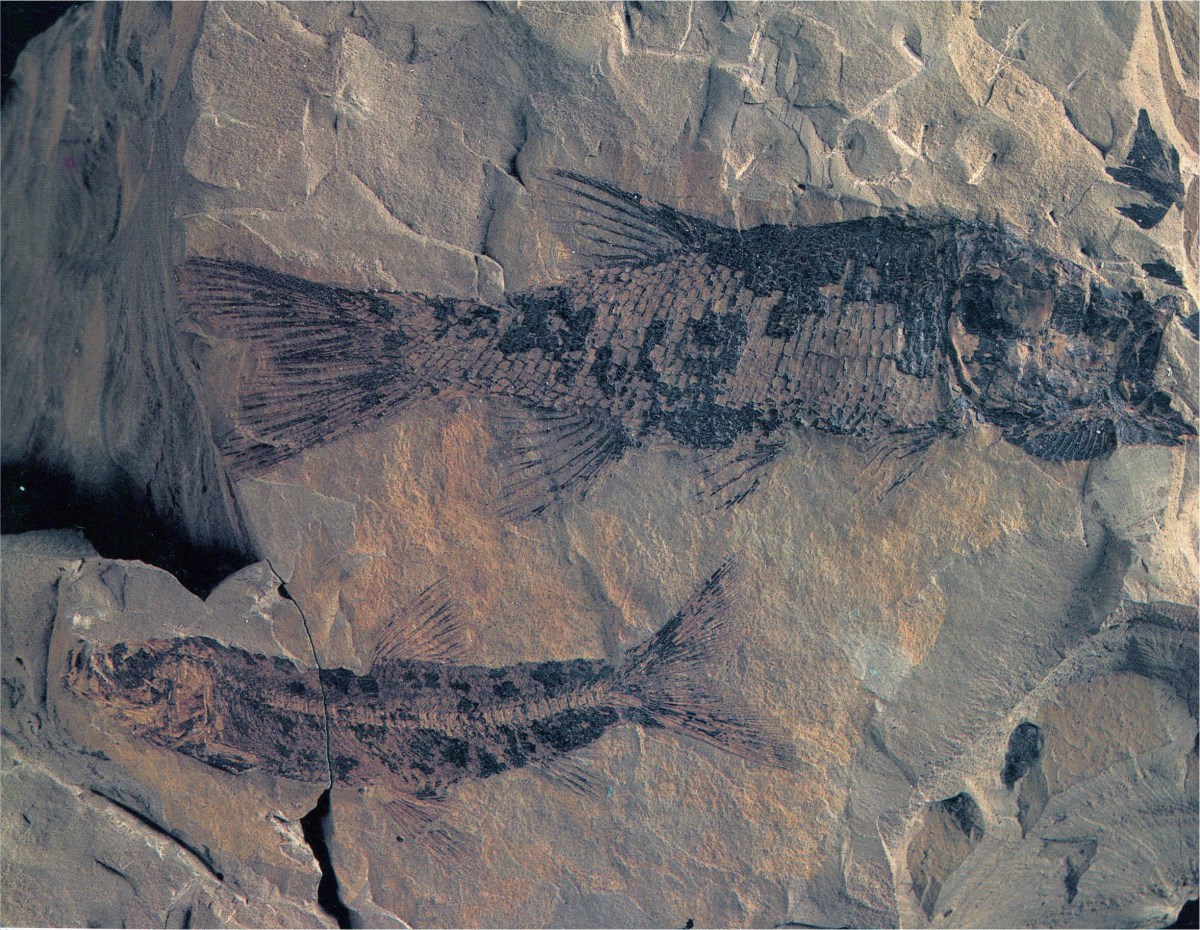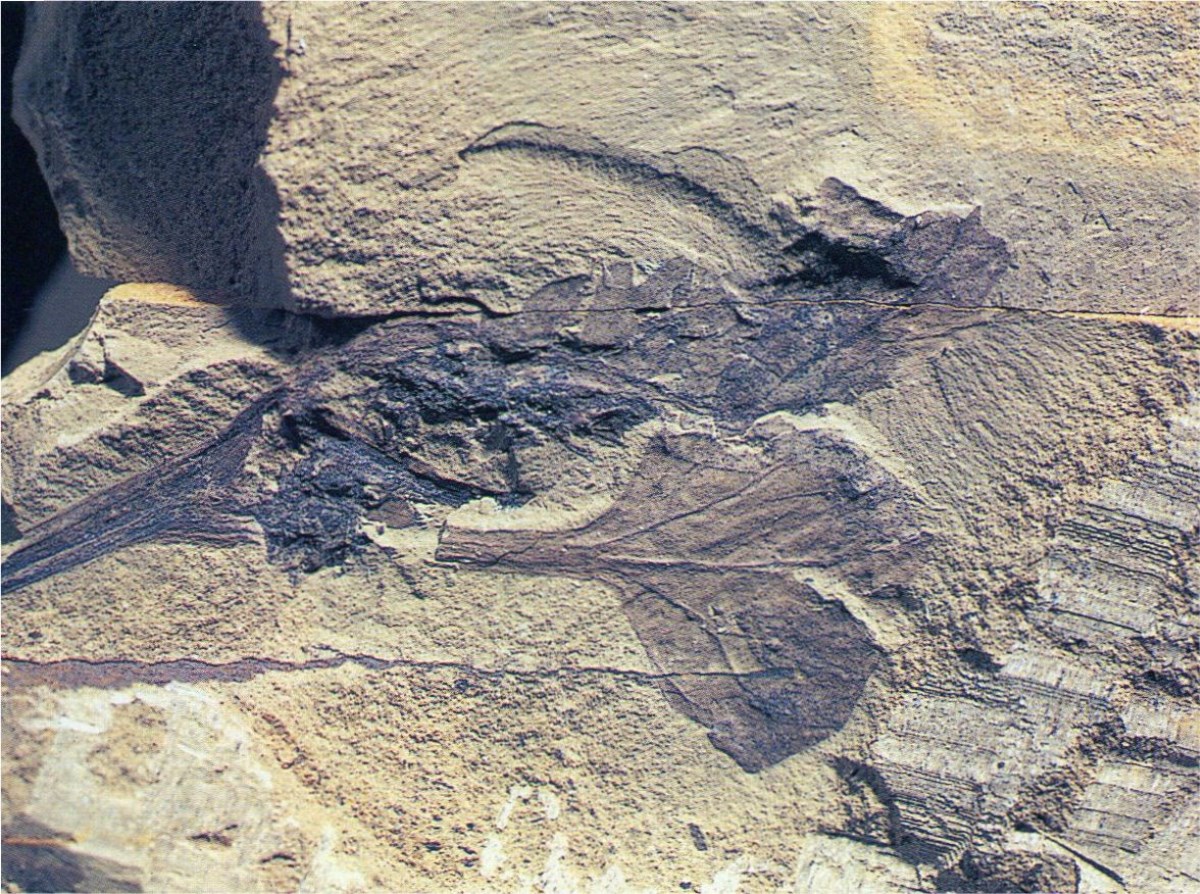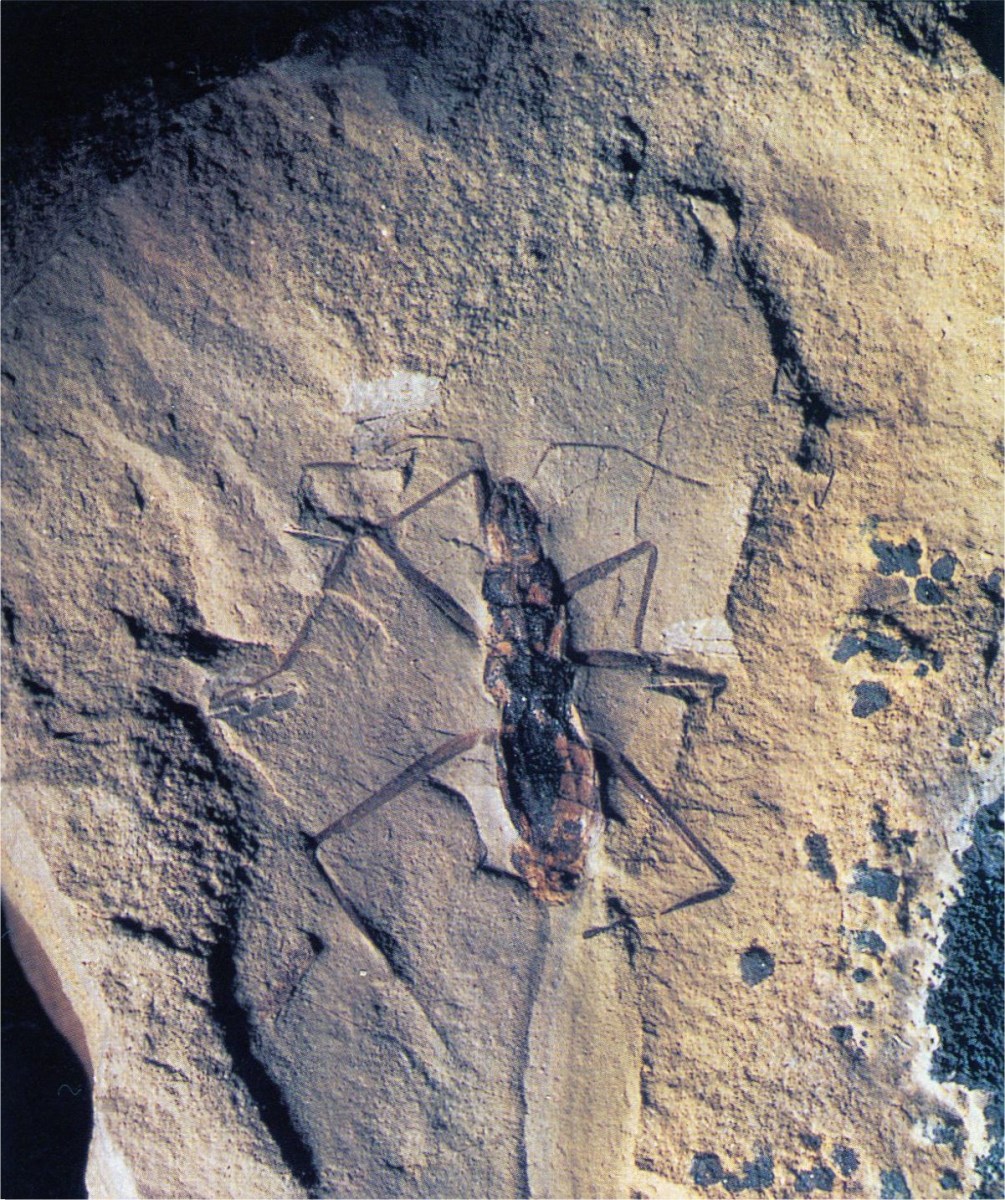The Koonwarra Fossil Bed Part 1
Part 1 - HISTORY
Introduced by Lesley Kool
Extracts from AAOD article by Steve Poropat
In March 2018 a small group of researchers, led by Dr Tom Rich from Museums Victoria and Professor Pat Vickers-Rich from Swinburne/Monash Universities, spent five days at the Koonwarra fossil locality, located on the side of the South Gippsland Highway, just east of the small hamlet of Koonwarra, Victoria.
The Koonwarra fossil locality has been known to the palaeontological community for many years and the reason for the visit to the site in March was not so much to find more beautifully preserved fossils but to work out how to remove the finely laminated siltstones/mudstones in the most efficient way possible.
The Koonwarra fossil locality has a fascinating history and rather than “re-invent the wheel” I approached Dr Stephen Poropat (Swinburne University and Australian Age of Dinosaurs) to ask if I could cite excerpts from his well-written article in the latest publication of the Australian Age of Dinosaurs to explain the importance of the site. Steve graciously gave his permission as did David Elliott, Director of the Australian Age of Dinosaurs. Below is an abbreviated version of Steve’s article on the Koonwarra fossil site. To receive the full version, head to the Australian Age of Dinosaurs web site (www.australianageofdinosaurs.com) and become a subscriber. I highly recommend joining as the annual publication contains information on all aspects of Australian palaeontology and your subscription will go towards advancing Australian palaeontological research and the construction of a world-class Museum at Winton, Queensland.
Excerpts from Dr Stephen Poropat’s article
“In terms of numbers of new species, excellence of preservation, and impact on palaeoecological knowledge, [Koonwarra] is one of the great fossil localities of the Mesozoic Era.” – Mary Dettmann and Jack Douglas, Geology of Victoria (Second Edition; 1988).
Most people with an interest in palaeontology will eventually come across the term Lagerstätte. Although it sounds like a brand of Bavarian beer, you will not find Lagerstätte on tap at Oktoberfest. However, both the beer type called “lager” and the palaeontological term derive from the same word: lager, which means “storeroom” in German. Combined with stätte, which means “place”, the translation of Lagerstätte is simply “storeroom place”. In truth, it does not sound very exciting once you break it down. However, if you found a Lagerstätte and told a palaeontologist of your discovery, they would practically beg you to take them to it.
So what is a Lagerstätte? Put simply, it is an exceptional fossil site. The term was proposed by German palaeontologist Dolf Seilacher in 1970 to categorise fossil sites of outstanding significance. According to his criteria, in order to earn the Lagerstätte designation, a site had to either preserve fossils in exceptional abundance (in which case it would be a Konzentrat-Lagerstätte – a “concentration storeroom”) or produce fossils of exceptional quality (thereby making it a Konservat-Lagerstätte – a “conservation storeroom”).
Many sites around the world produce fossils in sufficiently high numbers to be considered Konzentrat-Lagerstätten, but relatively few fossil sites can be truly termed Konservat-Lagerstätten. Even so, there are a few in Australia! One of these is the now-famous Koonwarra Fossil Bed in South Gippsland, Victoria.
In 1961 the Victorian Country Roads Board gave the green light on a proposal to straighten and widen a section of the South Gippsland Highway, a few kilometres east of the hamlet of Koonwarra. During this work, road gang workers discovered fossil fish. Jim Bowler, then at the Geology Department of the University of Melbourne, read about the discovery in the Leongatha Star. Prompted largely by his enthusiasm to follow up on this report, a team from the university visited Koonwarra in January 1962. With blasting assistance from the Country Roads Board, they were able to collect numerous fossils. Additional collections at the site were made in the early 1960s by the National Museum of Victoria and the Geological Survey of Victoria.
The discovery of the Koonwarra site, and the wide diversity, abundance and quality of preservation of its fossil content, entered the scientific literature in 1962. That year Elizabeth Carroll, a research student at the University of Melbourne, described two fossil insects from Koonwarra: one as a bee, and the other as a stonefly (the “bee” has since been reinterpreted as a leafhopper). The following year Jack Douglas from the Department of Mines published a report of a fossil fructification (from a flowering plant) from Koonwarra – a significant discovery as no fossils of flowering plants had previously been found in the Victorian Cretaceous. Then, two years later, John Talent, a palaeontologist based at the Geological Survey of Victoria, described beautifully preserved clam shrimps, further highlighting the site’s potential. These initial reports were, however, merely a taste of things to come.
In 1965 an Englishman named Michael Waldman successfully applied for a Monash University graduate scholarship. His supervisor Jim Warren suggested that he take a look at the fish specimens that had been collected from Koonwarra, many of which were then housed at the University of Melbourne. Although these fish fossils were numerous and beautifully preserved, they had received no real attention since they were collected in 1962. When Waldman decided to work on them for his PhD all of the fossil fish were transferred from the University of Melbourne to the Department of Zoology and Comparative Physiology at Monash.
Throughout the course of his studies Waldman led several expeditions to Koonwarra, often accompanied by zoology undergraduates from Monash. Prior to 1966 all excavation efforts had been concentrated on the northern side of the South Gippsland Highway. However, access to the fossil-bearing layer on this side of the road was limited for three reasons: its proximity to the rather busy highway, its abrupt termination at an adjacent steep-sided railway cutting, and its thickness (~8 metres). Consequently, Waldman and Warren sought – and were granted – permission from the Country Roads Board to dig on the southern side of the road, above and into the road cutting. Warren also asked the property owner whose land was immediately adjacent to the cut if it would be possible to extend the site on to his turf. This request was also granted.
In the same way that straightening roads seems to go hand in hand with finding exceptional fossil sites in Australia, the efforts of interested amateurs seem to be a prerequisite for fully recognising how exceptional those sites are. During the early 1960s Peter Duncan, who was a senior accountant with the State Electricity Commission (SEC), a resident of Morwell (a small town about an hour’s drive from Koonwarra) and a keen geological hobbyist, visited Koonwarra in the company of John Talent. Duncan became so fascinated with the Koonwarra site that his contributions to the collecting efforts there remain unparalleled.
Unweathered fossil-bearing rocks from the Koonwarra site tend to break irregularly across bedding planes. Unfortunately, this often results in fossils being incompletely exposed or, worse, fractured or shattered. Duncan stumbled upon the solution to this problem when he decided to split some rocks that had been exposed to weathering. When he did so he found that they split regularly along the bedding planes – where the fossils occurred! Armed with this knowledge, Duncan took to this task with relish. As his fascination grew, he filled his backyard with empty cable spools from the SEC and spread rocks from Koonwarra out on the flat sides. He believed that one shower of rain was all that was required to facilitate the splitting.
By employing this method, Duncan found thousands of invertebrate fossils. Sometime later Peter Handby, another SEC employee, followed Peter Duncan’s lead. In next to no time the efforts of both Peters reaped rewards – although their most exciting discoveries were not invertebrates!
In 1966 some of the most significant fossils found in the Koonwarra Fossil Bed were announced in the Journal of the Royal Australasian Ornithologists Union – simply known as The Emu. Although some might wonder why a paper on fossils from Koonwarra would be published in an ornithological journal, the answer is simple: the fossils in question were two feathers. One had been found by Peter Duncan and the other by Peter Handby, and John Talent (who lead-authored the paper) included his two friends as co-authors in recognition of their discoveries.
When the Koonwarra feathers were described the only older feathers in the fossil record belonged to the famous Archaeopteryx (“ancient wing”) from the Late Jurassic of Germany. Amazingly, at the time only three other bird fossils were known from the entire Early Cretaceous worldwide! It is hard to imagine how other palaeontologists received the news back then, since we are now so spoilt by the relative richness of the fossil record of Cretaceous birds.
It should also be borne in mind that, in the mid-1960s, no non-avian dinosaurs had ever been found with feathers preserved – indeed, this would not transpire until 1996. Consequently, it was assumed that birds were the only animals to have ever had feathers and, understandably, the Koonwarra feathers were taken as unequivocal evidence of Victorian Early Cretaceous birds. However, it is now widely acknowledged that some of the Koonwarra feathers might pertain to non-avian theropod dinosaurs rather than true birds.
In 1971 Waldman’s research on the fossil fish from Koonwarra was published in Special Papers in Palaeontology – an apt avenue for a paper on such a special site. Waldman reported five different types of fish in the fauna, and also discussed other aspects of the site.
The most abundant fish at Koonwarra was also the most “modern-looking” – it would not seem out of place in a modern aquarium. Waldman originally described this fish as Leptolepis koonwarri, but it was later transferred by Argentine palaeontologists Emilia Sferco, Adriana López-Arbarello and Ana María Báez into its own genus, Waldmanichthys – Waldman most definitely did not name it after himself! Based on the sheer number of specimens preserved at Koonwarra, these fish were evidently very successful, or at least more prone to being fossilised than the other species. The largest Waldmanichthys at Koonwarra reached a mere 15cm in length – if they were still around today, any self-respecting fisherman would throw them back.
The next most abundant fish at Koonwarra was Wadeichthys oxyops. It was named after prominent Australian palaeontologist Reverend Robert Thompson Wade who worked extensively on fossil fish from NSW, including those from the famous Talbragar site (see AAOD #5 – The Talbragar Fish Beds Uncovered). Wadeichthys was even smaller than Waldmanichthys, with the largest specimens only around 12cm long, and was completely covered in diamond-shaped scales.
After an almost-decade-long lull during which very little on Koonwarra was published, interest in the site was renewed in 1981. In February that year the first excavation at Koonwarra since the 1960s was spearheaded by a University of Melbourne team. Its express purpose was to amass a collection of fossil plants for a master's student, Andrew Drinnan, working under the supervision of the renowned botanist Carrick Chambers. Permission to dig was sought and obtained from the Country Roads Board, and a contractor with a bulldozer was hired to expose the fossil bed. Jack Douglas, Tom Rich, Tim Flannery, Alex Ritchie and dozens of others took part on this trip as well, which led to the recovery of thousands of fossils. This collection provided more than enough material for Drinnan's thesis, which he submitted in September 1982, and also led to the discovery of fish types never seen at the site before; these remain undescribed.
The most abundant fossils preserved at Koonwarra were plants. Drinnan and Chambers' report detailed a diverse flora, with liverworts, mosses, clubmosses and horsetails all present, and ferns, cycads and ginkgoes all common. Conifers were well represented, with araucarians, podocarps and cheirolepidaceans all recorded. Although Drinnan and Chambers didn't identify any angiosperm macrofossils (and questioned the 1963 interpretation by Douglas of angiosperm “nuts”), Dettmann did identify pollen possibly from flowering plants, indicating that they might have been there.
In fact, not long after Drinnan and Chambers' paper was published, a flowering plant was identified from Koonwarra! In 1990 David Taylor and Leo Hickey, both based at Yale University, worked out that one plant, described as a fern by Drinnan and Chambers, was in fact a flower attached to a stem. At the time of the announcement of their discovery this was the oldest flower in the world. Although older fossil flowers have since been found elsewhere, this beautiful fossil still emphatically demonstrates that the flora at Koonwarra was beginning to take on a somewhat modern look, despite the fact that it was living ~120 million years ago.
Between 1981 and 2013 no further excavating was done at Koonwarra. The discovery of dinosaur bones near Eagles Nest by Tim Flannery, John Long and Rob Glenie caused Tom Rich and his team to turn their attention towards the Victorian coast. This was in large part because Rich was looking for Cretaceous mammals, his wife Patricia was looking for Cretaceous birds, and Koonwarra – sadly – was not producing them.
Although Rich's team eventually found fossil mammals at three separate localities along the Victorian coast, most of the specimens were lower jaws with teeth. From these bones alone, Rich could only work out so much about Victoria's Cretaceous mammals – more complete specimens were desirable. Unsurprisingly, Rich never forgot about Koonwarra, and he visited the site several times to consider how to proceed there in order to have a chance of finding skeletons of vertebrates other than fish. However, it was not until Rich travelled to China that an idea of how to tap into Koonwarra's potential started to form in the back of his mind.
In June 2009 Rich visited the Sihetun region in Liaoning Province – an area now famous among palaeontologists. The reason for this fame is that the rocks there have produced thousands of fossils, most notably feathered dinosaurs. Of course, Sihetun was not always famous. Fossils were reported from the region as long ago as in the 1920s, but these were bivalves and little attention was paid to them. Between the 1920s and 1990s the only additional fossils reported from Sihetun were fish, plants and invertebrates. This sounds somewhat familiar, doesn’t it? Throw in a few feathers, and you have a site that sounds just like Koonwarra.
Sihetun went one better than a few feathers. The 1992 announcement of a tiny bird fossil from the region, dubbed Sinornis (“China bird”), triggered a “fossil rush” in the region. From the mid-1990s onwards fossils of breathtaking quality were exhumed in staggering numbers. Among their ranks were feathered dinosaurs (including birds), furred mammals and fuzzy pterosaurs.
While visiting Sihetun Rich pondered why it had taken so long for the region to produce its first fossil bird, and why the rate of discovery had risen asymptotically since. The answer he settled on was simple, and was inspired by his visit to the fossil pits dotted around the region. It was manpower, and nothing more.
In the 1990s farmers in the Sihetun region realised the significance – and value – of the fossils on their land. Consequently, several started to dig for fossils and sell them to palaeontologists and fossil dealers. This enabled them to make more money than they could from farming. As more and more farmers downed one set of tools in favour of another, vast quantities of rocks were extracted and examined, and myriad fossils other than plants, fish and invertebrates were found. Rich wondered: what would happen if Koonwarra was subjected to a similarly intense collection effort?
Rich's notion that a more extensive excavation at Koonwarra might be a game changer was galvanised by his visit to the Sihetun Landscape Fossil Bird National Geopark. As is the case at Lark Quarry (see AAOD #2 – The Ghosts of Lark Quarry), the Sihetun museum building was constructed directly above the fossil-bearing rocks. All of the dinosaur fossils under the roof had been left in place where they were discovered, and display cases had been built around each one. Virtually all other fossils found at the site had been removed, although some fish remained. Rich noticed that all of the dinosaurs preserved on site were complete skeletons – there were no isolated bones. This implied that the carcasses were buried quickly, or decayed very little before burial as a result of a lack of oxygen in the water. Additionally, he noted that these dinosaur fossils – all of which were from rather small forms – were sparsely distributed, with only 31 specimens in an area of 400 square metres.
Knowing this, Rich wondered if the only reason that Koonwarra had not produced any mammal, dinosaur or bird skeletons, despite producing everything else that Sihetun had, was because too little rock had been excavated. The most extensive digs at Koonwarra had only shifted 14–16m³ of rock. What if that figure were doubled? Or tripled? Or quintupled?
In April 2013 Tom Rich and Tim Flannery led a small-scale dig at Koonwarra, effectively as a proof of concept – a demonstration that even if dinosaur or mammal skeletons were not found, at least many other amazing fossils would be. Koonwarra did not disappoint, again yielding exquisite fish and plant fossils. Unfortunately, neither mammal nor dinosaur skeletons turned up. This was not surprising: compared with the scale of the excavation that Rich wanted to conduct, this dig was tiny.
Until a large-scale dig is held at Koonwarra this is where the story of this amazing site must end. Despite the fact that the only traces of vertebrates other than fish at Koonwarra are ten tiny feathers, it should now be clear just how phenomenal this site is, and the potential it has to produce amazing fossils long into the future.
The discovery of a single dinosaur, bird, mammal or pterosaur at the Koonwarra Lagerstätte would be a palaeontological game changer – just as it proved to be for Sihetun. However, as Tom Rich often says, “The hardest fossil to find is the first one.” Were he, or someone else, to raise sufficient funds to excavate properly at Koonwarra, then there might just be a chance of finding something spectacular. There is no doubt that future excavations at Koonwarra, just like virtually every dig that has taken place at the site since its discovery in 1961, will benefit greatly from the participation of enthusiastic volunteers like Peter Duncan. At Koonwarra, those volunteers just might find something that will rewrite Australian palaeontology – or at least one aspect thereof!
Dr Stephen Poropat is a postdoctoral researcher in palaeontology at Swinburne University of Technology, Melbourne. He has been a research associate at the Australian Age of Dinosaurs Museum since 2011 and has worked extensively on Cretaceous sauropods from the Eromanga Basin. He is passionate about promoting palaeontology to the public.
Steve's article was published before the field trip in March 2018, which was designed to work out how to remove large blocks of the Koonwarra mudstone/siltstone without it falling apart in the process. The results of that field trip will be featured in the next update, so stay tuned.

Fossil imprint of feather from the Koonwarra fish beds. (Wildlife of Gondwana; P.Vickers-Rich and T.H. Rich. Reed Publishing 1993.)

Wadeichthys oxyops, a teleost fish from the Koonwarra fish beds. (Wildlife of Gondwana; P.Vickers-Rich and T.H. Rich. Reed Publishing 1993.)

Originally the oldest known flower. An unnamed species from the Koonwarra fossil fish beds (Wildlife of Gondwana; P.Vickers-Rich and T.H. Rich. Reed Publishing 1993.)

Duncanovelia extensa, a fossil insect from the Koonwarra fish beds (Wildlife of Gondwana; P.Vickers-Rich and T.H. Rich. Reed Publishing 1993.)
visits